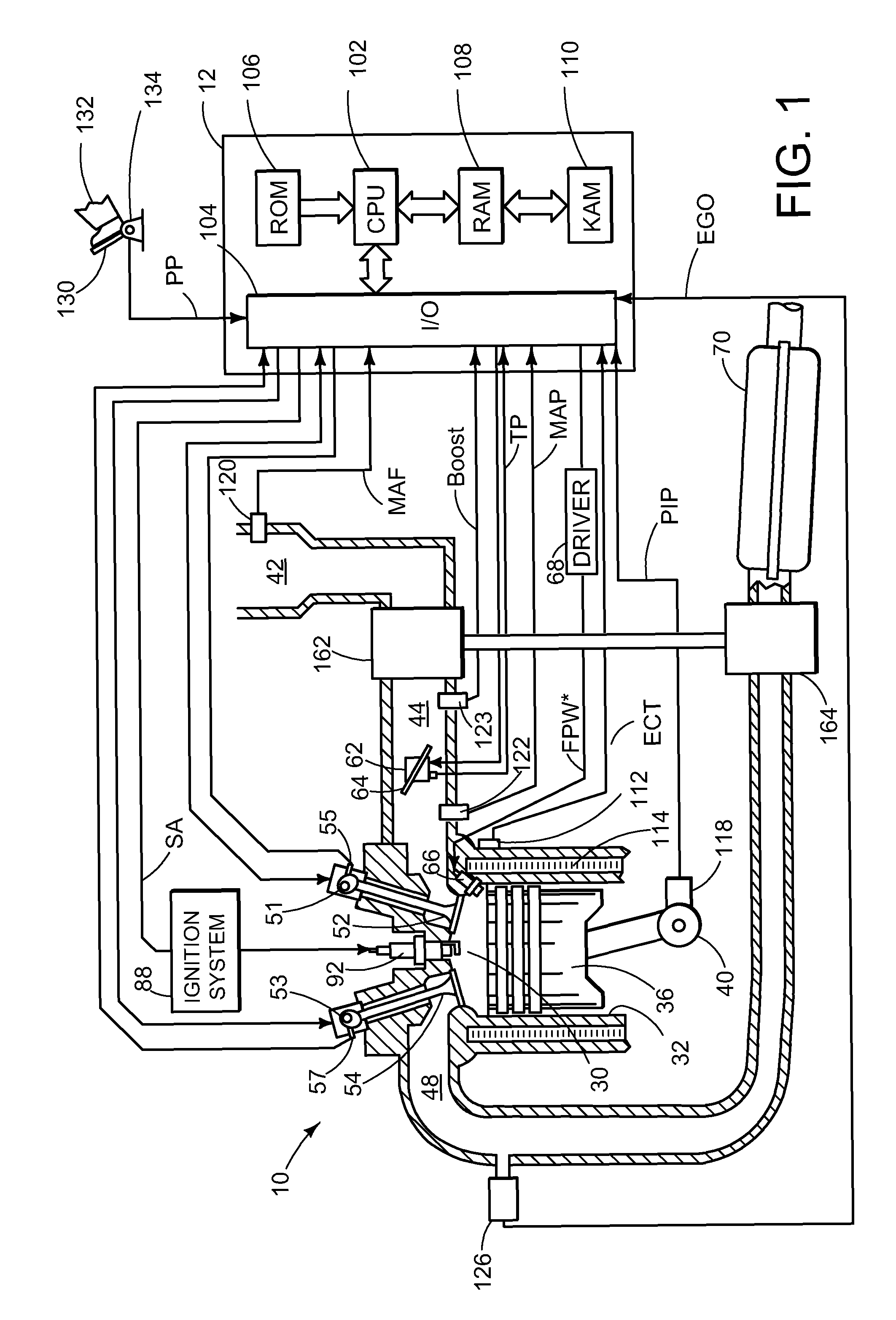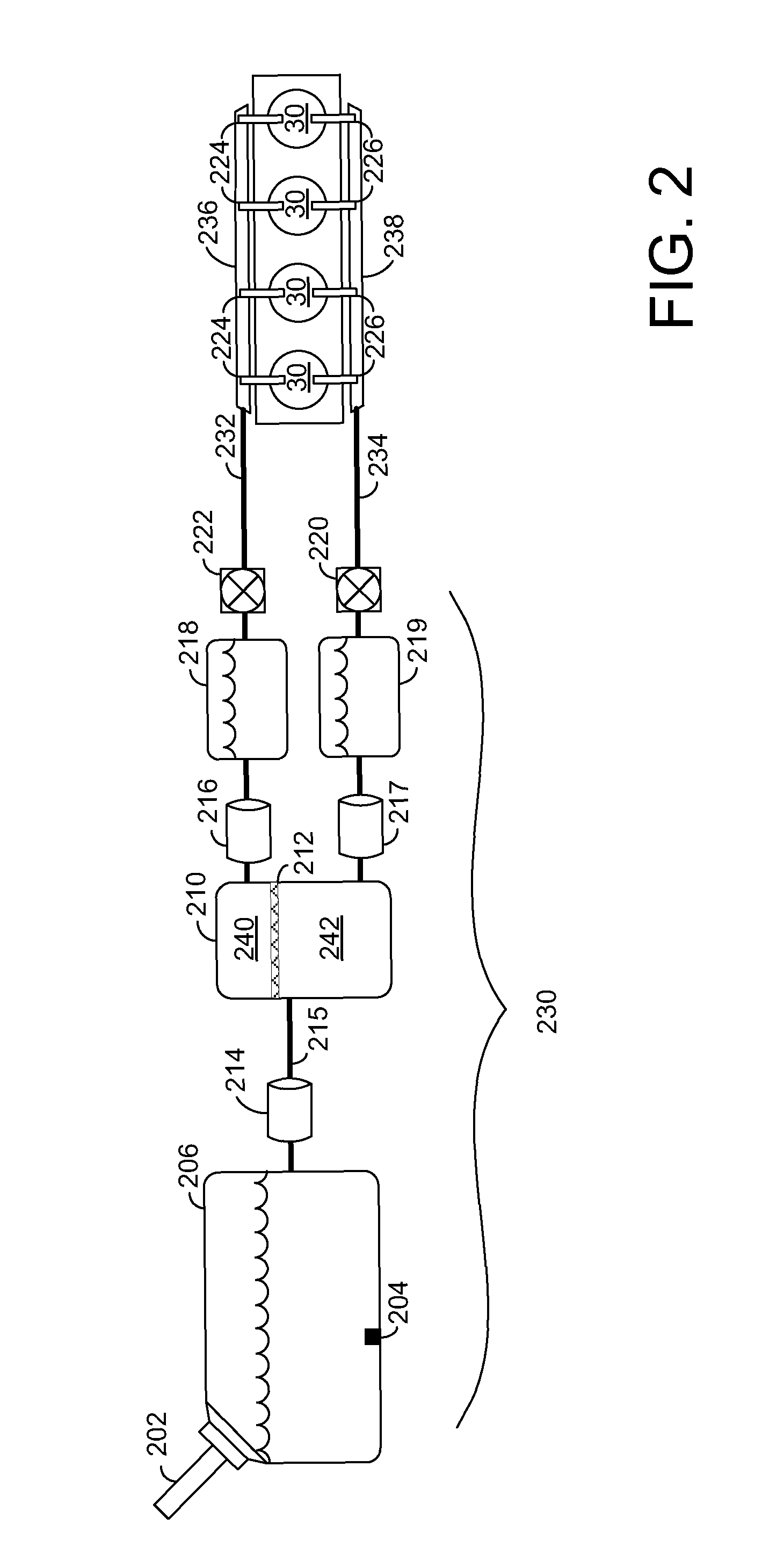Octane separation system and operating method
a separation system and octane technology, applied in the direction of machines/engines, electrical control, exhaust treatment electric control, etc., can solve the problems of high pressure and temperature in the combustion chamber during high torque operation, inability to adjust the octane separation threshold, and inability to reduce so as to reduce or eliminate the staleness of fuel, increase secondary combustion efficiency, and be readily combustible
- Summary
- Abstract
- Description
- Claims
- Application Information
AI Technical Summary
Benefits of technology
Problems solved by technology
Method used
Image
Examples
Embodiment Construction
[0018]Gasoline contains a large number of hydrocarbon compounds used for combustion. Compounds such as isooctane (C8H18), butane (C4H10), 3-ethyitoluene (C9H12), and octane enhancer methyl tert-butyl ether (C5H12O) are commonly found in gasoline, each having a respective octane rating and energy density. Ethanol (C2H6O) is also commonly found in blended gasoline and has a higher octane rating and lower energy density than unblended gasoline.
[0019]Octane rating and, synonymously, octane level refer to conditions that a fuel-air mixture can withstand without igniting. Higher octane fuels may withstand higher pressure and temperature within a combustion chamber without auto-igniting than lower octane fuels.
[0020]Under normal applied ignition conditions, combustion is initiated in a combustion chamber via a spark containing an air fuel mixture between 10 and 40 crankshaft degrees prior to top dead center. This allows for the combustion process to develop peak pressure at a time allowing...
PUM
 Login to View More
Login to View More Abstract
Description
Claims
Application Information
 Login to View More
Login to View More - R&D
- Intellectual Property
- Life Sciences
- Materials
- Tech Scout
- Unparalleled Data Quality
- Higher Quality Content
- 60% Fewer Hallucinations
Browse by: Latest US Patents, China's latest patents, Technical Efficacy Thesaurus, Application Domain, Technology Topic, Popular Technical Reports.
© 2025 PatSnap. All rights reserved.Legal|Privacy policy|Modern Slavery Act Transparency Statement|Sitemap|About US| Contact US: help@patsnap.com



